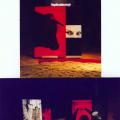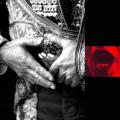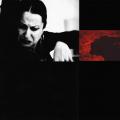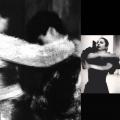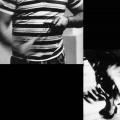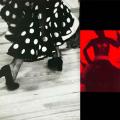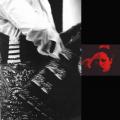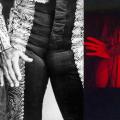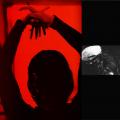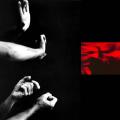Hotel de Région / Bordeaux - 1996
La Danse de la vie
« Fragments of a passionate body" 1996
Within the neo-surrealist spirit of post-modern art blend, Martine Mougin combines media and arts, that is, photography and painting. The ten diptychs with photograhs of corridaand flamenco now presented by the artist ( Braga, 1998) act as an alchemy mutation of strongly symbolic artistic areas in order to reveal glamorous looks, gestures; rites and passions hidden deep into our poetry-living body. It is not the issue here to compare Belmonte's pure veronica to Ordonez's abanicando, nor to refer to the tree tercios of the corrida or the moments of a solea. it is a altogether different aficion . The diptichs display, playing with contrasts as clear/ flou,read / black, male/ female, huma:/monster, is the setting for sacrifice mimetic ceremonies which weave in light and schadow the immemorial passionate body's costume. The duende is elsewhere.His enchanting sorcery acts in a plastic romance which unfolds as an immense fan, a farole and buleria. It all probably started by this diptych where the flamenca looks sideways at the powerful impact of a bull lost in the campo's flou. Pasiphaj's monstrous love stains her forehead with an intense red. Nuditas/Véritas. The double reality of the photographic motif according to Barthes. « That as been ». The totem like ancestor appears without a mask, below the fate number, 13. Europe knows that bulls are gods. Maeana Coronado (the dancer) also unveils herself. The ceston falls.With a horror grimace, she loses her face and head. Same muzzle. Same black costumes. Same arms and horns movement. To mimic the loved object in order to « face it » I pretend to be you, make you love me. The only desira is the desire of someone who who we don't let down. It is also twice as mimetic. Salomé's arms draw a black orbit that encloses the black eye on the head, the same way the white bull's horn curls around its black eye. The dancer's fingers sharpen exaggeratingly at the sound of castanets wich extend them as deadly darts. As new « shift ». Desire must travesty once again as a body and its object must disguise in flou. La peterena dances embraces and holds herself. Alike threads, tentacles, her arms twist around her body and embalm it, enclosing the head wich looks like a relic. Through their look, hidden in the half-light of the arena coulisses, two toreros who are tidying their costumes, also seem to embrace. It is the same threads of love and death, yet invisible this time, theaded by the hands of waving flamenca. Her hands open, twist and close again in the rhythm of the siguiriyasand the tonas. At her side, a peon (trustworthy) his hands out of focus by speed, Baconian hands, sharpen a knife, a descabello? The mythic ancestor colapses pierced by the banderillas. He must die. No angel will stop the « piercing arm ». The flamenca is only a rictus , her finger pointed impetatively to the descabello. Art makes us see what we can't see and yet observes us. Art, Martine Mougin's duende, depens on an enchanting sorcery. Her amazing plastic set up of an « erotic-bullfighting » romance liberates the countless love poems which inhabit our poetry-loving body. Bernard Lafarge Université Bordeaux
Sources : Aucune
